8/27 Polish trains run on a different gauge track than the rest of the trains in Western Europe requiring you to change trains at the border. Basically you hop off one train and onto another. When we got to Zgorzelec everyone got off the train, presumeably to get on the German train. Zgorzelec was the station listed on my ticket for the change. I followed all of the other big backpacks but when we reached the top of a staircase I saw we were in a parking lot not near another station.
The station where we were was essentially abandoned
. There was no map, no information booth, no one to speak to, etc. I eventually flagged down a taxi and showed the driver my ticket suspecting that I had gotten off the train too early. He knew what had happened (hopefully I wasn't the first) and drove me maybe 1 km through the neighborhoods to another station that had the same name. It was even smaller than the first one!
I went inside and the only employee was on a sofa reading a book. I finally knocked on the window and showed her my ticket. She wrote down the time of the next train to Dresden and it was 3 hours later. Ugh! The station had no map, no vending machines, no information booth, no benches, no customers, no anything. It was very bizarre.
During my 3 hours there only 1 train came through, it was bound for somewhere in Poland. There were parhaps half a dozen customers during the 3 hours. Finally a German train showed up and the ticket agent came and told me that was my train, which she was very nice to do. Both countries are in the EU so there's not a formal border crossing but German soldiers came on board to check my passport. They probably needed something to do.
The German train was very nice and new, unlike the Polish train. The German train was non-smoking and air-conditioned. As soon as the train entered Germany the houses changed and the landscape becme prettier
. The farm houses typically had a Swiss/Austrian flair to them and lovely flower boxes. There were frequent small parcels of land along the train tracks for vegetable and flower gardens. You see these throughout Europe and I think they are great. Just a small vegetable patch out of town a little ways. I'm not sure if the parcels have to be bought or if they are loaned or given.
We arrived in Dresden, the capital city of the German Federal Free State of Saxony, right on time. It is situated in a valley on the River Elbe. I quickly stored my backpack and bought a guidebook. I wasn't sure what to see so I quickly read through the book. I went outside to ask about taking a city tour but it was too late. With a pleasant location and a mild climate on the Elbe, as well as Baroque-style architecture and numerous world-renowned museums and art collections, Dresden has been called "Elbflorenz" (Florence of the Elbe). I set out to see why.
I was immediately struck by the beauty of the city
. There was green space everywhere, lots of fountains and statues, brand new light rail trains and busses, and lots of historic buildings. The city seemed a lot bigger than Wroclaw but its population is supposed to be less. There were cranes and signs of construction everywhere.
8/28 I just loved the nice cool weather and sleeping with the windows open. One hazard in Dresden is the bicyclists. In many places there are dedicated bike lanes but where there aren't any the bicyclists usually ride on the sidewalk. They'll surprise you from behind and weave in and out of pedestrian traffic. You always have to look behind you before changing direction or you might get run over.
I started my city tour with a paddleboat ride up the Elbe River. The Elbe is a relatively small river but they did have a major flood in 2002 when the river rose 9 meters above normal and flooded most of central Dresden. I'll mention now that later in the afternoon my camera told me it could not read my memory card, and that I needed to format it but that meant I would lose my pictures
. I tried every alternative with no luck so all of my pictures from the morning city tour were lost. :-(
The commentary on the boat was all in German so I had no idea what was being said but enjoyed seeing the big villas on the hills and some palacial estates. One of our first stops was at the Blue Wonder. It was built in 1893 and is a 150 meter span that crosses the Elbe without piers and was regarded as a technical miracle at the time. It is one of the most familiar landmarks in the city but is quite boring compared to the Golden Gate Bridge.
Our destination for the boat ride was Pillnitz Castle, 7 kilometers upriver from Dresden. Originally August the Strong built the palace for his mistress, Countess Cosel. The palace had additions through the years and is magnificent now. It's too bad the pictures were lost. The palace is large with symmetrical buildings in a square with a flower-filled courtyard. One highlight at the palace is the oldest camellia in Europe which was delivered from Japan in 1770
. Today it is over 8 meters high and 9 meters in diameter.
After taking some pictures I went to get on the Hop On, Hop Off bus that comes every 30 minutes. I found the stop and started reading. After no bus showed up I started to look around and read on the bus schedule that, unlike all of the other stops, the bus comes to the castle only once every 3 hours! I couldn't believe it. I guess they expected us to spend 3 hours in the castle. I checked the local bus schedule which wasn't much help because it just went 2 more stops so I started walking.
It was a cool day so I didn't mind the walk but I was upset because my pass was only good for the day and there were tons of things to see and some guided tours were at set times that I had scheduled around. I got into town and there were more local busses available so I took one into Dresden that crossed the Hop On, Hop Off path. Of course I waited and the first Hop On bus was a German-speaking-only bus so I had to wait another 30 minutes before a bus I could ride on showed up
. I could see my day wasting away.
We drove through the hilly side of Dresden to the White Stag. There's a long story behind the name, but basically this is a 100 year old cableway up to the top of a hill overlooking the city. It was an enjoyable ride and offered great photo ops from the top (all gone now). The view showed a pretty concentrated city core and then surrounding farmland. The whole area was very green.
The next stop on the Hop On tour was Pfunds Dairy. I stayed on the bus in order to make one of the guided tours but I went back the next day to visit. This dairy is in the Guinness Book of World Records as the Prettiest Dairy in the World. It is a storefront as opposed to a manufacturing facility. Established in 1891 it is decorated with nearly 250 square meters of hand painted tiles. It was really gorgeous but they allowed no photos inside so I stood just outside the door and took a few shots. I was looking forward to an ice cream cone but this dairy does not sell ice cream! I was floored
. A dairy without ice cream? Instead they had lots of cheeses.
From Pfunds Dairy we went to Zwinger Palace where I met our tour guide. Some history: Augustus the Strong, elector of Saxony, returned from a grand tour through France and Italy in 1687-89, just at the moment that Louis XIV moved his court to Versailles. On his return to Dresden, having arranged his election as King of Poland (1697), he wanted something similarly spectacular for himself.
Zwinger was constructed in stages from 1710 to 1728. Zwinger was formally inaugurated in 1719, on the occasion of the electoral prince Frederick August's marriage to the daughter of the Hapsburg emperor, the Archduchess Maria Josepha. The building was mostly destroyed by the carpet bombing raids of February 13-15, 1945. The art collection had been evacuated before, though. After the war, in a referendum, the people of Dresden voted to restore the building and generally preferred to rebuild the glories of the city, instead of having the ruins bulldozed to make way for the architecture of socialist realism, then prevalent in the German Democratic Republic.
Zwinger's Gemäldegalerie Alte Meister (Old Masters Picture Gallery) became a star attraction in Dresden's rich cultural heritage. It now houses collections of fine art and scientific treasures. There is a collection of old masters, with paintings of Rubens, Canaletto, Raphael and many others
. Also there is a collection of Far East and Meissen porcelain which is one of the most extensive and impressive of its kind in the world.
I loved Zwinger for its symmetry. Like the Pillnitz Castle, Zwinger has buildings in a square with a great center courtyard. Around the top of the buildings are small statues of various Saxon heroes but only 8 are original. Our guide was informative and gave us some history of Dresden along the way.
The bombing of Dresden by the Royal Air Force and by the US Army Air Force between February 13 and February 15, 1945, remains one of the more controversial Allied actions of that war. The inner city of Dresden was heavily destroyed during what proved to be the final weeks of war in Europe. Figures put the death toll at 35,000 although it was probably much higher due to the number of refugees that had fled to Dresden. The guide showed us photos of the buildings after the war and there was just not much left.
One thing that you'll notice in the photos of Dresden buildings is that many of them look black
. There are light colored stone blocks too, which just means they are new. The buildings are all made of local sandstone which has an extremely high iron content. As the sandstone ages it gradually will turn black as a result.
In front of Zwinger is a beautiful square called Theaterplatz. The square is in a prime location in front of the Semper Opera House and the Hofkirche. Dominating the square is an 1889 equestrian statue of Saxon King John, who is also reknown for his translation of Dante's Divine Comedy.
Thanks to the fiasco with the Hop On, Hop Off bus I missed the only scheduled tour inside the Semper Opera House. I saw pictures in the guidebook as well as brochures and it looks amazing. The Opera House opened in 1841 and is one of the most beautiful opera houses in the world. The acoustics and the orchestra - the Staatskapelle, are marvellous. In 1842 Richard Wagner came to Dresden as conductor and conducted the first performances of The Flying Dutchman, among others
. Nine operas by Richard Strauss were performed for the first time in Dresden. During the air raids in 1945 the Opera House was reduced to rubble and it took 40 years to rebuild, largely with the original facade.
Across the square from the Opera House is Hofkirche (Catholic Court Chapel). It is recognized for its high roof featuring 78 statues, each of more than 3 meters. The church was built in the mid 18th century but destroyed in 1945. Rebuilding of the church started in 1979 and still continues. It was controversial initially since it is a Catholic Church in a city where 97% of the citizens are Protestant. The Hofkirche is said to be the greatest cupola building in Central and North Europe. Furthermore, the Frauenkirche is the largest church in Dresden, making Dresden one of the few places in Europe where a cathedral is not the largest Christian sacred building.
Next to the Hofkirche is an unbelieveable piece of art. It is the 102 meter long Procession of Dukes. It took 24,000 hand-made porcelain tiles to create this tribute to the rulers of Saxe-Wettin. It survived the air raids of 1945 and the history behind many of the rulers was fascinating.
Our group then proceeded to the large staircase (1814) that leads up to Bruhl Terrace. Situated at the south end of the Augustus Bridge, the terrace is named for the prime minister under Augustus the Strong
. Bruhl Terrace is an elevated promenade in front of many of Dresden's famous buildings facing the Elbe River. Goethe called the terrace the "Balcony of Europe."
There are just so many incredible buildings in Dresden. I'm just detailing a fraction of the ones we saw. One of the most stunning buildings in town is the Frauenkirche (Church of Our Lady) originally built in 1726. With an exterior stone dome of 26 meters it is the biggest stone dome north of the Alps. It took more than 30,000 workers to build but collapsed just 2 days after the air raids of 1945 after it was weakened by fire. In 1993 reconstruction started and it is now complete with 45% of the original stone. The impressive building is an enormous Protestant Church with the dome being one of the most notable features in the Old Town.
Our tour finally concluded and I was just overwhelmed. The pictures of the Old Town after the air raids of 1945 were sobering. After the war, Dresden still faced 40 years in the Soviet bloc state of East Germany which prevented any major rebuilding efforts
. Interesting fact: from 1985 to 1990 the KGB stationed Vladimir Putin, the future present President of Russia, in Dresden. Today more than 10 millions tourists a year visit Dresden.
Along with its twin city Coventry,(UK) Dresden was one of the first cities to twin with a foreign city. The two cities became twins after World War II in an act of reconciliation, as both had been nearly destroyed by bombing. Some of Dresden's other sister cities are:
Wroclaw, Poland, since 1963
Florence, Italy, since 1978
Columbus, USA, since 1992
I took a bus back to the hostel. The public transit system in Dresden is very impressive. In addition to bus and trams that look brand new, the stations list each route and how many minutes the wait will be. On the bus there were flat screen TV's that would tell you the stations coming up, which busses connect there and show you a map of the area. I thought it was very helpful and wish it was used everywhere.
8/29 I can't believe it has been 3 months without the gym, no driving, no cell phone, etc
. The morning started cool and overcast so I worked on the computer before venturing out. My first stop was the Artists Courtyard Passage. I thought this was very neat! It is a nice complex of inner courtyards artistically decorated. The complex offers art galleries as well as coffee shops. It reminded me of Austin with its unconventional stores and renegade architectural designs.
I had thought about going to the Royal Palace where they have numerous exhibits including the world's largest green diamond. My guidebook said to avoid going on Wednesday (it's closed Monday and Tuesday) due to long lines so I decided to skip it.
I walked back to Albertplatz where I read and enjoyed people-watching. Many Dresden residents have large dogs and these dogs go with their owners almost everywhere. The dogs have all been well-behaved, as they tend to be in the rest of Europe. I finished The Shipping News, winner of the Pulitzer Prize, a wonderful story set in Newfoundland
. I found Michael Tolliver Lives by Armistead Maupin so that's next on my list.
Among Dresden's other claims to fame:
* The Striezelmarkt is Germany's oldest Christmas market. It takes place from the last days of November till Christmas. Actually located at the Altmarkt, all kinds of shops and Glühwein Buden (mobile cafes selling mulled wine - delicious!) now stretch through the whole city center during this period.
* The Dixieland Festival is Europe's biggest Jazz Festival!
* The Filmnächte takes place from June to August at the banks of the Elbe, just across the castle on the other side of the river. A huge movie screen offers cinema in a beautiful setting and there are also many concerts with popular stars. Again, it is the biggest event of its kind in Europe!
8/30 Today is the best weather yet and I'm leaving. :-( Dresden just doesn't look like a former East German city to me. It has a very Western feel and seems like a progressive, modern city
. It's too bad I'm leaving since there is plenty more to see in Dresden. It was one of my favorite cities, along with Budapest and Dubrovnik.
My Air Berlin flight to Lisbon connected in Palma, Mallorca so I thought I'd see where Rafael Nadal lives. The flight to Palma was on a plane that easily had the least leg room of any plane I've ever been on. I couldn't even sit facing forward, I had to sit sideways. The plane was full so it was quite uncomfortable.
Mallorca looked beautiful as we flew over. Pretty blue water along with some of the usual tourist developments. I'm not sure what there is to do there besides the beach but it looked very nice.
The Mallorca airport was new and had a wonderful village design. There were none of the usual boring airport shops and restaurants. Instead the airport used soft colors and had more relaxed and fun signs, designs and tenants. It was great to see! Air Berlin dominated the airport with about 75% of the planes
. The flight from Palma to Lisbon was on a normal plane with normal legroom, thankfully.
It was such a strange feeling be back in the Lisbon airport. It's hard to imagine that more than 3 months have gone by. I've seen some beautiful places and expanded my horizons. It would have been better to have friends along but I just asserted my independent streak and managed OK.
At the Lisbon airport I went straight to the lost baggage office and took a number since that was the lesson Lee and I learned last time. The office was chaotic and very busy again which made me wonder why they seemed to be having so many problems since the weather was fine and it was in the middle of the day. After 45 minutes I finally had my backpack come around on the carousel; much to my relief.
I finished Michael Tolliver Lives while I waited. It was sort of disappointing since it takes some of the characters from Tales of the City and shows them a couple of decades later and much of the activity is depressing. I went out and bought some books for my long flights and started The Good Husband of Zebra Drive by Alexander McCall Smith.
Hope to see everyone soon!!!!
Dresden, Germany
Tuesday, August 28, 2007
 Dresden, Germany
Dresden, Germany
Other Entries
-
17Portofino, Italy
Jul 0752 days prior Portofino, Italyphoto_camera69videocam 0comment 1
Portofino, Italyphoto_camera69videocam 0comment 1 -
18Cinque Terre, Italy
Jul 0950 days prior Cinque Terre, Italyphoto_camera57videocam 0comment 1
Cinque Terre, Italyphoto_camera57videocam 0comment 1 -
19Viareggio, Italy
Jul 1247 days prior Viareggio, Italyphoto_camera18videocam 0comment 0
Viareggio, Italyphoto_camera18videocam 0comment 0 -
20Siena, Italy
Jul 1544 days prior Siena, Italyphoto_camera26videocam 0comment 0
Siena, Italyphoto_camera26videocam 0comment 0 -
21Sorrento, Italy
Jul 1841 days prior Sorrento, Italyphoto_camera10videocam 0comment 0
Sorrento, Italyphoto_camera10videocam 0comment 0 -
22Capri, Italy
Jul 1940 days prior Capri, Italyphoto_camera15videocam 0comment 0
Capri, Italyphoto_camera15videocam 0comment 0 -
23Amalfi Coast, Italy
Jul 2039 days prior Positano, Amalfi, Ravello, Italyphoto_camera21videocam 0comment 1
Positano, Amalfi, Ravello, Italyphoto_camera21videocam 0comment 1 -
24Ravenna, Italy
Jul 2237 days prior Ravenna, Italyphoto_camera21videocam 0comment 0
Ravenna, Italyphoto_camera21videocam 0comment 0 -
25Rome, Italy
Jul 2732 days prior Rome, Italyphoto_camera0videocam 0comment 0
Rome, Italyphoto_camera0videocam 0comment 0 -
26Bratislava, Slovakia
Jul 2831 days prior Bratislava, Slovakiaphoto_camera27videocam 0comment 0
Bratislava, Slovakiaphoto_camera27videocam 0comment 0 -
27Budapest, Hungary
Jul 2930 days prior Budapest, Hungaryphoto_camera43videocam 0comment 0
Budapest, Hungaryphoto_camera43videocam 0comment 0 -
28Dubrovnik, Croatia
Aug 0424 days prior Dubrovnik, Croatiaphoto_camera0videocam 0comment 0
Dubrovnik, Croatiaphoto_camera0videocam 0comment 0 -
29Ulcinj, Montenegro
Aug 0523 days prior Ulcinj, Serbia and Montenegrophoto_camera17videocam 0comment 0
Ulcinj, Serbia and Montenegrophoto_camera17videocam 0comment 0 -
30Budva, Montenegro
Aug 0721 days prior Budva, Serbia and Montenegrophoto_camera21videocam 0comment 0
Budva, Serbia and Montenegrophoto_camera21videocam 0comment 0 -
31Dubrovnik and Lokrum Island, Croatia
Aug 1414 days prior Dubrovnik, Croatiaphoto_camera53videocam 0comment 0
Dubrovnik, Croatiaphoto_camera53videocam 0comment 0 -
32Krakow, Poland
Aug 226 days prior Krakow, Polandphoto_camera46videocam 0comment 1
Krakow, Polandphoto_camera46videocam 0comment 1 -
33Wroclaw, Poland
Aug 253 days prior Wroclaw, Polandphoto_camera40videocam 0comment 0
Wroclaw, Polandphoto_camera40videocam 0comment 0 -
34Dresden, Germany
Aug 28 Dresden, Germanyphoto_camera32videocam 0comment 0
Dresden, Germanyphoto_camera32videocam 0comment 0 -
35Lisbon, Portugal
Aug 302 days later Lisbon, Portugalphoto_camera0videocam 0comment 0
Lisbon, Portugalphoto_camera0videocam 0comment 0 -
36Houston, TX, USA
Sep 014 days later Houston, United Statesphoto_camera0videocam 0comment 0
Houston, United Statesphoto_camera0videocam 0comment 0 -
37Trip Slideshow
Oct 0538 days later Houston, United Statesphoto_camera203videocam 0comment 0
Houston, United Statesphoto_camera203videocam 0comment 0

 Dresden, Germany
Dresden, Germany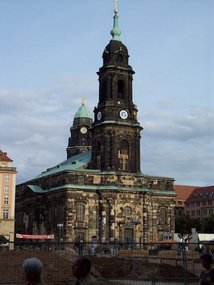

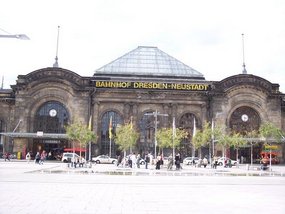
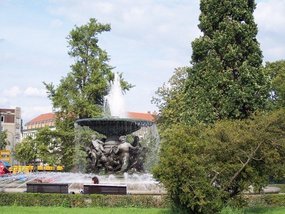
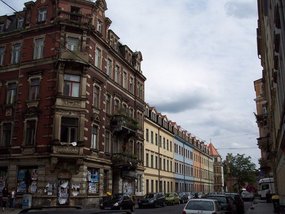
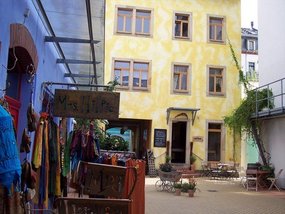
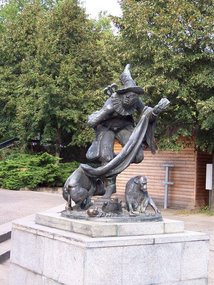
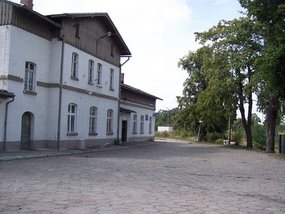
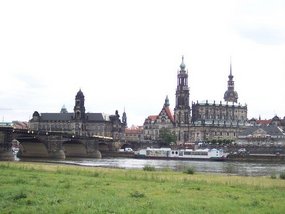
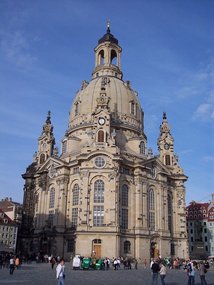

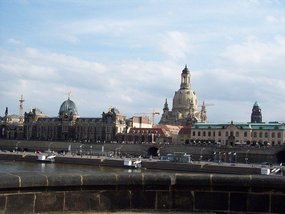
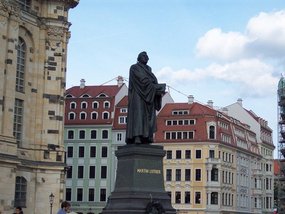
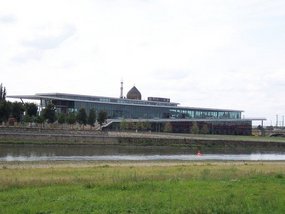
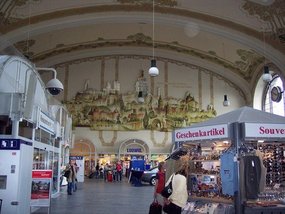
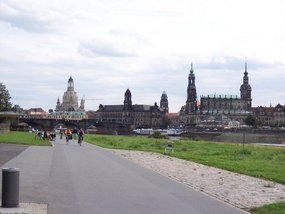









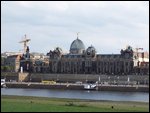
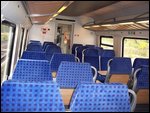

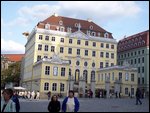
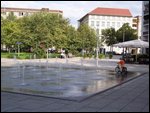
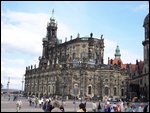
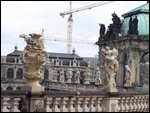
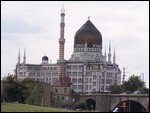
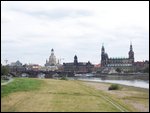
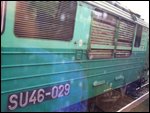
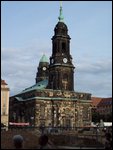
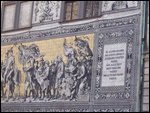
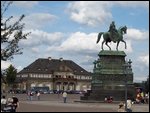
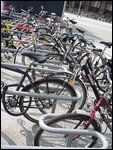
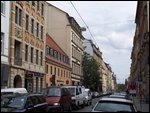
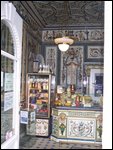
2025-05-22